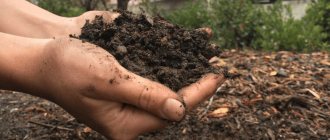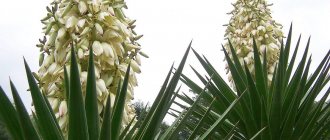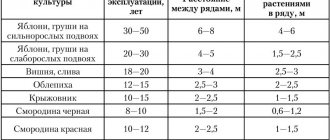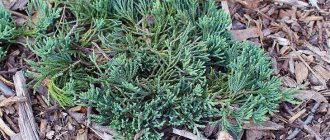Soil liming is a special treatment process used to remove excess acid from the soil to improve the soil's nutritional properties. This treatment not only reduces acidity, which is harmful for most crops, but the soil itself becomes looser, and as a result it retains moisture better. There is another aspect of liming: lime saturates the soil with calcium and magnesium, which are often lacking in cultivated crops.
Liming Basics
The basis of any acid is hydrogen, so, from a chemical point of view, liming is the replacement of hydrogen atoms with other chemical elements (most often calcium, magnesium), followed by the decomposition of the acid and the formation of salt. The catalyst for the reaction is carbon dioxide, which is constantly contained in the soil. During the reaction, it forms a transition salt of calcium carbonate, which subsequently reacts with the acid. In this case, limestone and chalk allow you to lower the acidity level of the soil as loyally as possible, and also create nourishment for plant roots. It is worth noting that the more calcium there is in the soil, the harder it is. This can lead to difficulty growing plant roots (especially those with weak root systems). Therefore, excessive liming is not recommended. Calcium is not washed out of the soil by rain.
Substances similar in composition to lime are also used for fertilizer. Lime fertilizers used for land reclamation:
- calcite,
- limestone,
- dolomite flour,
- slaked or quicklime,
- oil shale ash,
- lake lime,
- blast furnace slag,
- cement dust,
- sugar production waste
- peat tuffs.
In each individual case, their own soil liming rates are calculated.
There is a misconception that liming is best done with gypsum. In fact, gypsum is applied exclusively for the reclamation of soils with increased salt deposition.
Lime as fertilizer
Fertilizing with lime is one of the simplest ways to deoxidize soils. This is especially true on alumina and loam. Only slaked lime (fluff) is suitable for use.
It acts much faster than analogues - for example, dolomite flour. Therefore, it is indispensable when growing garden plants with a short growing season. These include cucumbers, tomatoes, and zucchini.
Note. There is no need to lime the soil before sowing potatoes. This crop bears fruit well even on slightly acidified soil. And it reacts to excess calcium with a specific disease - scab.
When applying lime, it is important to maintain the correct dosage. So, for slightly acidic soil 500 g per meter is enough, for soil with an average pH - 550 g, for highly acidic soil - 650 g.
It is prohibited to add more than 0.7 kg per square meter. m. In this case, individual microelements will turn into solid compounds, which plants will no longer be able to absorb.
Advantages
- lime saturates the soil with essential minerals.
- the metabolism of garden crops improves.
- organic matter begins to release 35% more of its nutritional components.
- Thanks to lime, the active growth of beneficial microflora in the soil begins.
- the soil becomes loose, thanks to which the root system of fruit crops receives oxygen faster.
- the percentage of toxins in fruits decreases.
Results achieved by liming soils
The main advantages of the process:
- The soil is enriched with microelements that improve plant development.
- Organic fertilizers begin to yield 30-40% more returns.
- The activity of some beneficial microorganisms increases.
- The structure and properties of the soil (water resistance, for example) improve.
- The level of toxic elements in grown plants is significantly reduced.
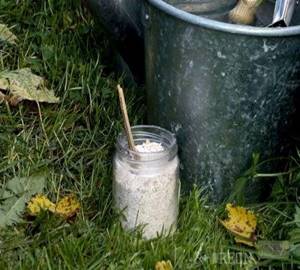
It must be said that the results of liming appear progressively. In some cases, improvements occur only after several years. Therefore, liming should not be done annually.
But, if ammonia preparations are used as fertilizers, liming should be carried out regularly. Repeated liming also depends on the addition of these fertilizers. If, for example, the soil is regularly fertilized with manure, it is recommended not to carry out repeated liming.
Lime fertilizers for acidic soil
For fertilizer you will need powdered lime. If you only have quicklime, then you can pay it off at home. To do this, you can simply fill it with water.
To prevent potatoes from losing immunity to scab, these beds should be fertilized with chalk or dolomite flour. In addition to these fertilizers, wood ash is also suitable, but only in a double dose. Ash from sunflower and potato stems can also be an excellent fertilizer for the soil.
To deoxidize the soil, it is not necessary to use lime; it can be other elements whose composition is similar to it.
Acidic soils and plants
Of course, different types of cultivated plants require different soils. Most plants love neutral soil. The few crops for which acidic soil is preferable include:
- potato,
- chokeberry or lupine,
- tea,
- most varieties of winter crops.

At the same time, acidic soils are completely unsuitable for legumes; currants, cabbage, beets, mustard, clover and most vegetables thrive on neutral or slightly acidic soils.
Of the trees, apple trees, pear trees, raspberries, gooseberries and strawberries grow well in slightly acidic soils. Cherries and plums love alkaline soils.
What soils require liming?
Before you improve the fertility of your plot, you need to find out whether the soil actually has acidity, and for effective fertilization, you must first of all correctly calculate the amount of lime per volume of the soil complex being fertilized. And the need for liming itself should be established, in an amicable way, on the basis of special agrochemical analyses. The calculated dose of lime material will depend on the acidity of the soil and the presence of humus in it.
In general, regarding the question of which soils require liming, you need to remember that the following have a high level of acidity:
- red soils,
- soddy-podzolic soils,
- gray forest,
- peat swamps.

Acidic soils are characterized by a whitish tint, and when digging the area, layers of the same color are noticeable. At the same time, acidic soil is not necessarily evenly distributed throughout the entire area, but may only be in some places. Most likely, if mint and sorrel, horsetail and plantain, fireweed and heather grow wildly on the site, soils with high acidity predominate on it.
When should quicklime be applied?
For the first time, powdered lime is spread throughout the site when planting an orchard during site preparation. Then the addition of limestone is carried out in early spring or autumn before the actual digging of the earth. High-quality mixing of lime with soil is the main condition for the effective application of this mixture.
The dosage of lime applied to the soil depends on the following conditions:
- The degree of acidity of the soil, depending on its general composition, with increased values, the dosage is increased;
- What fertilizers are used in combination with the application of lime?
- Depth of composition;
- The duration of the break between the last application of fertilizers and the current procedure.
When to lime
If it has been established experimentally that the soil needs liming, it is necessary to carry out the procedure in accordance with generally accepted requirements. First of all, this applies to the period of work (performed in the fall, before arable work). First, lime flour or other material used for liming is spread evenly over the site, and then organic fertilizers, after which the soil is dug up. Autumn rains will evenly distribute lime at the depth where the roots of cultivated plants are located. This procedure will provide the soil and plants with the necessary substances for a period of up to 10 years.
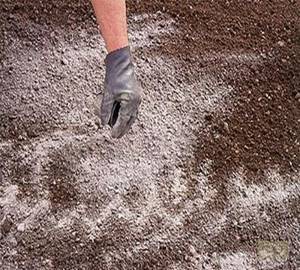
There is also the option of liming acidic soils in small portions - it is carried out in early spring and is much more effective, as a result of which it is widely used in practice. Liming of the soil in spring is carried out shortly before the first loosening of the soil. Liming is recommended to be carried out before fertilizing the soil with various biological and chemical additives. Lime, in its own way, increases the absorption properties of the soil; accordingly, they are absorbed much faster. It is permissible to add chalk or lime to the beds in very small portions, mixing it with humus directly on the ground. In practice, it turns out that only 2-3 kilograms of lime, which are added to beds with humus, in terms of their effectiveness give the same result as 10 kg of lime flour simply scattered over the site.
There is one important point: lime changes the percentage of calcium and potassium in the direction of increasing the former, and therefore in liming it is worth increasing the dose of fertilizers containing potassium.
Use of lime fertilizers
Thanks to them, the rhizomes become powerful, due to which all the nutritional components contained in the soil and fertilizers are absorbed. Liming itself does not occur, so it is necessary to make some efforts and comply with a number of conditions.
- Liming must be carried out at least once every 5–6 years. The best period for carrying out such a procedure is autumn and spring. Fertilizers and chemical processes occurring in the soil change the acidity of the environment , but after a period of about 5-6 years, everything returns to the original result, so liming must be repeated again.
- The beneficial effect of liming for many plants is best manifested at a certain ratio of components . For example: an absorption complex (a combination of calcium and magnesium) should be equivalent to this calculation, 100 parts calcium + 40–80 parts magnesium. This is an ideal option, although with a different ratio the plants may well develop. Some highly acidic soils have too little magnesium content, and when liming the soil with a fertilizer that contains the formula CaCO 3, the gap between these components will only increase. This can lead to a decrease in the effectiveness of the fertilizer, and in some cases even have a negative effect on some plants. In such conditions, it is better to use fertilizers containing both calcium and magnesium.
- The effect of lime fertilizer will be much greater if you combine it with mineral and organic compounds:
- manure;
- boron and copper fertilizers;
- superphosphates;
- potash, cobalt and bacterial fertilizers.
Liming the soil at home
In order to find out the chemical composition of the soil on your own, without resorting to special research, you need to shake a couple of spoons of soil in a glass of water and leave for a while. When the turbidity settles to the bottom, several layers will be visible: the lowest one will consist of pebbles and sand, a little higher there will be a clay layer, and particles of humus and plants will float on the surface, which over time, having collected water, will settle on the clay layer. To determine the acidity level, you need to find out which layer occupies the maximum volume:
- if sand predominates, the soil is sandy,
- if the clay layer predominates, the soil is clayey,
- if the layers of sand and clay are approximately equal, the soil is sandy loam or loamy.
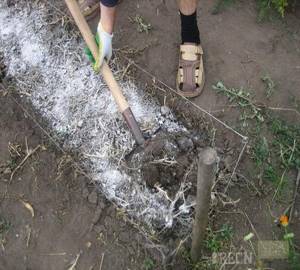
How to prepare lime flour
Liming the soil at home occurs as follows:
- on a flat area with a dense surface, spread quicklime in an even layer 8-10 cm thick,
- then spray it with water,
- after 20 minutes to half an hour, part of the lime will be extinguished and dry,
- the resulting flour (the so-called fluff) is collected in a container, and the remaining lumps are moistened again.
Water consumption will be about 3-4 liters per 100 kg of quicklime.
By the way, if quicklime is stored in the air for a long time, it turns into fluff naturally, absorbing moisture contained in the air. Of course, this is a very long process.
The resulting powder (fluff) is added to the soil. The depth to which lime is applied is the depth of the soil layer that needs to be treated, usually about 20 cm. If lime is applied to the soil in incomplete doses, then the depth is very small, about 4-6 cm.
Naturally, the more acidic the soil, the greater the amount of lime that will need to be added.
Methods for determining soil acidity
When micronutrients enter the soil, a chemical reaction occurs; they break down into ions, which are actively absorbed by plants. The more hydrogen ions remain in the soil after decay, the higher the acidity of the soil.
Hydrogen activity and the degree of acidity of the soil are usually denoted by pH:
- in neutral - pH=7.0;
- in acidic - pH less than 7.0;
- in alkaline - pH more than 7.0.
But how to correctly determine this value and understand whether it makes sense to lim the soil? There are several ways.
Plants as an indicator of acidity
When there is no special device or litmus paper at hand, weeds growing in the country will help determine acidity.
1. They prefer acidic soil: blueberries, chamomile, ferns, mints, plantains, rosemary, wild rosemary, tricolor violets, white beard, field speedwells, creeping buttercups, horsetails, heathers, small sorrel, wild rosemary, horse sorrel, sedge.
2. They like alkaline soil: larkspur (another name for delphinium), poppy, field mustard, white doze.

3. Neutral soils are liked by shepherd's purse, milkweed, chicory, adonis, field bindweed, garden sow thistle, and white sweet clover.
4. Meadow clover, quinoa, nettle, rose hips, garden thistle, coltsfoot, creeping wheatgrass, and woodlice grow well on slightly acidic soil.
indicator paper
The technology for determining soil acidity using litmus paper is as follows:
- A hole (25-35 cm) is dug in the area.
- Take a handful of earth from the bottom.
- Moisten it a little with rainwater (it is not recommended to take it from the water supply, such water contains chlorine, and the result may be inaccurate).
- Indicator paper is applied to the damp soil (it is sold in stores).
- If the color changes, it means either the soil is acidic (pink to red, pH 3 to 5) or alkaline (green to blue, pH 7 to 10).
Special pH measuring instruments
You can buy devices to determine the acidity level - testers. The rules of use are quite simple, and the measurement results will be the most accurate.
The tester is an indicator with a display on which measurement data is displayed, and a measuring probe immersed in the ground. Using the device, in addition to the pH level, you can measure the temperature and degree of soil moisture, which is very convenient, especially when planting plants.
To correctly measure acidity, you need to follow simple recommendations:
- for accuracy, readings must be taken several times and then the arithmetic average must be derived;
- the tester probe must be clean, free of dirt and oil stains;
- during measurements, the probe must be completely immersed in the ground for its entire length;
- Measurement in dry soil is not carried out. You must first moisten it with rainwater and only after a few minutes, when the liquid is absorbed, immerse the dipstick.
Using traditional methods
Gardeners determine whether the soil requires liming using folk methods proven over the years.
The most faithful assistant is 9% table vinegar. You need to take soil from different areas in the garden, wet it with rainwater and after a few minutes pour in a small amount of vinegar. The appearance of strong foam indicates acidic soil, and its absence indicates alkaline soil. If there is foam, but very little, then the soil is neutral.
Blackcurrant leaves can also help determine the acidity of the soil:
- They must be poured with boiling water and left for half an hour.
- Dip soil samples into the resulting infusion.
- Observe how the color of the liquid changes. A green tint indicates alkaline or neutral soil, while a blue color indicates acidic soil.
Soil liming standards
The main and most used lime fertilizer is limestone ground into flour. It is for this that further approximate calculations of the amount in kilograms to be applied per 1 square meter will be given. m of soils of different acidity:
- the most acidic (pH below four): 0.5-0.6,
- strongly acidic (pH four): 0.4-0.5,
- acidic (pH from four to five): 0.3-0.4,
- moderately acidic (pH from five to six): 0.25-0.3.
The pH value indicates acidity. At pH:
- 3-4 soil is considered acidic,
- 5-6 – slightly acidic,
- 6-7 – neutral,
- 7-8 – alkaline,
- 8-9 – highly alkaline.
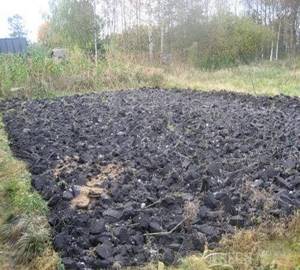
In the case of using analogues of ordinary lime, we present the percentage of calcium content:
- 135% - slaked lime,
- 75-108% - dolomite,
- 90-100% - chalk,
- 75-96% - calcareous tuff,
- 70-96% - lake lime,
- 95-108% - dolomite flour,
- 25-75% - marl,
- 10-50% - peat tuff,
- 80-90% - belite flour,
- 65-80% - oil shale ash,
- 80% - cement dust,
- 85% - open-hearth slag,
- 150% - burnt dolomite dust,
- 120% - gas lime,
- 110% - podzols from leather factories,
- 140% - carbide lime,
- 10-50% - peat ash.
To calculate soil liming rates, that is, the amount of lime waste that needs to be applied, the dose indicated for ground limestone must be multiplied by 100 and divided by the percentage of lime given for the selected type of fertilizer.
